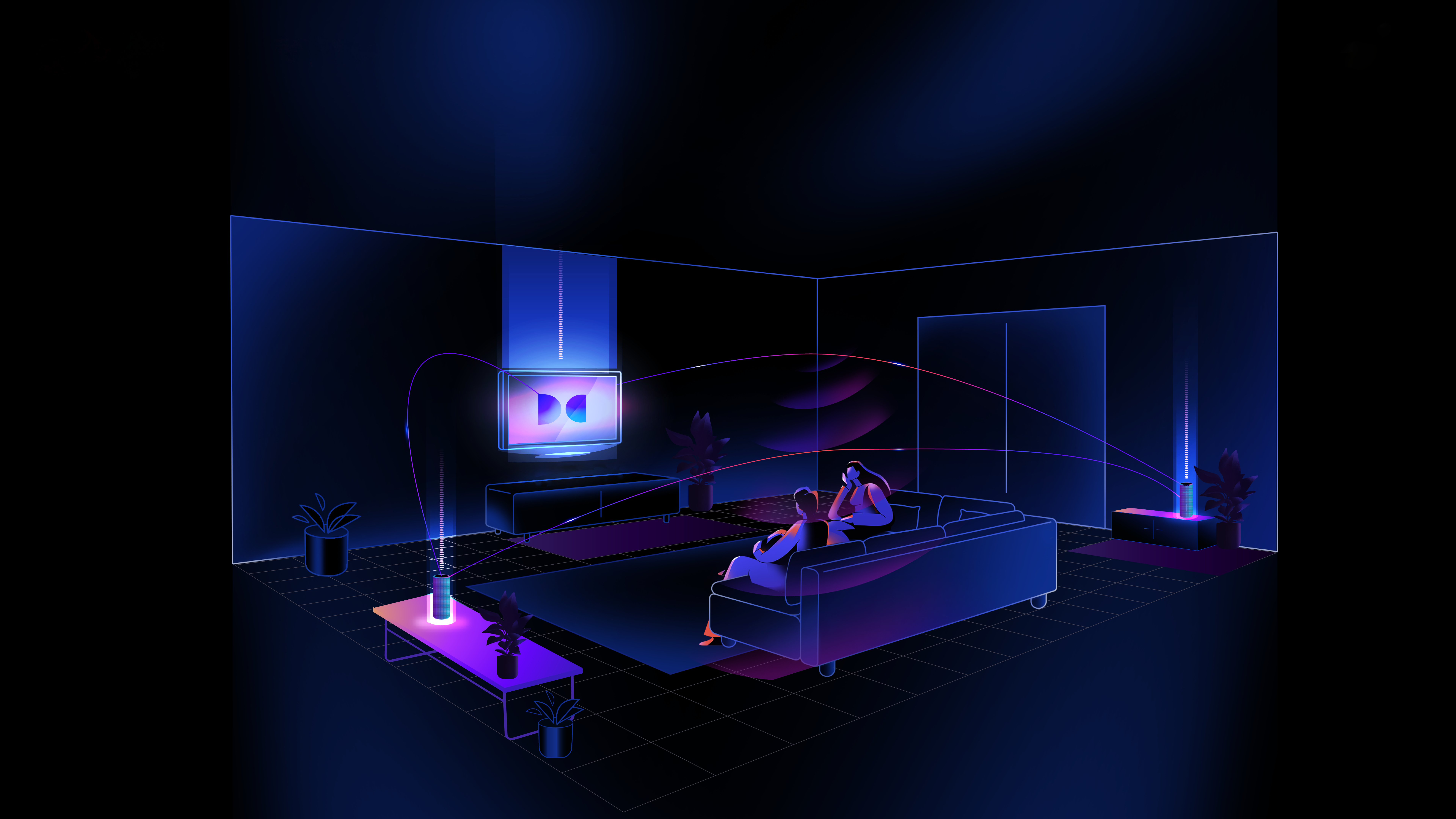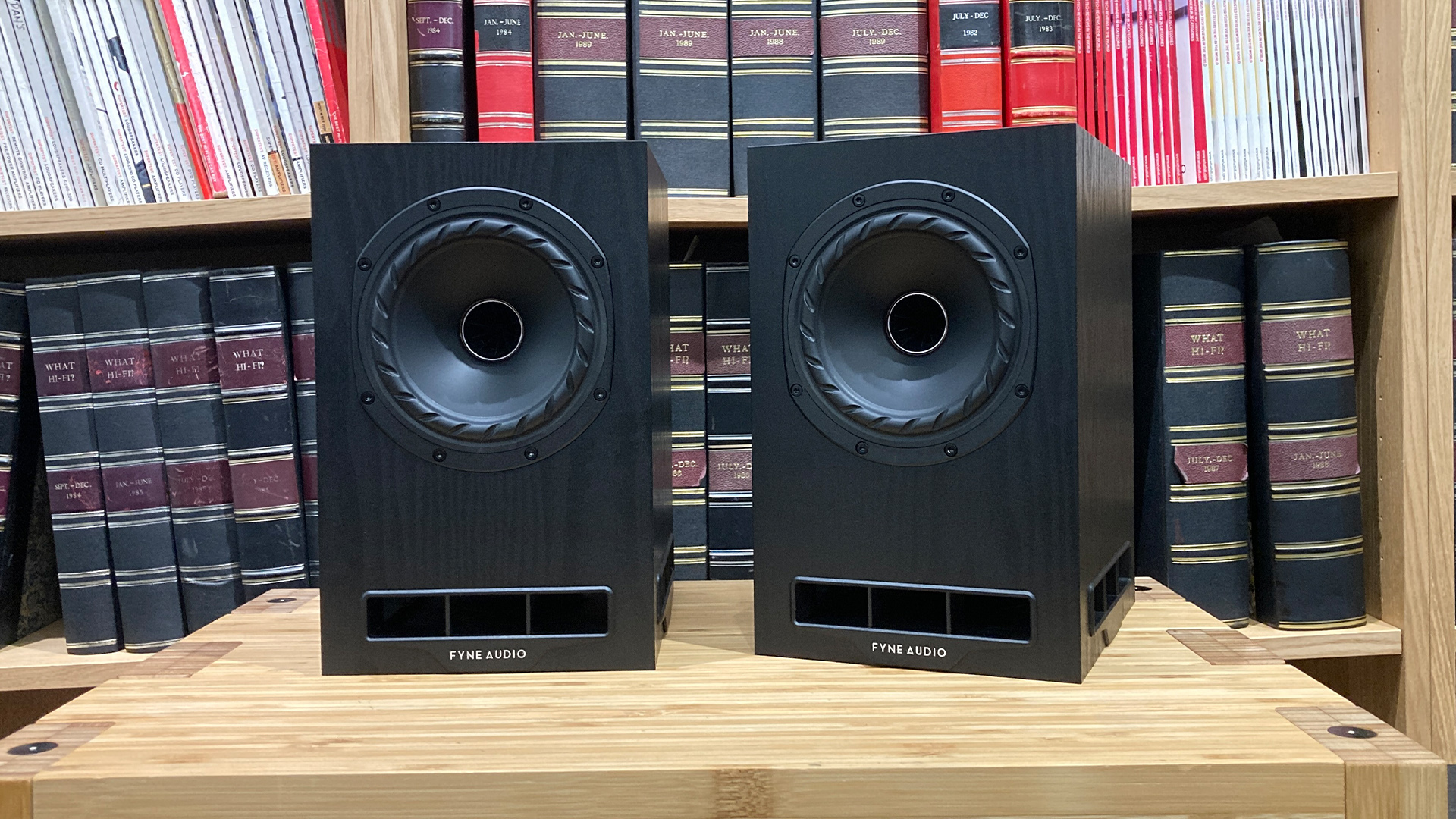Dolby Atmos FlexConnect vs DTS Play-Fi Immersive Home Theater: a wireless surround sound showdown
The future of home cinema is... cable-free?

Fully-fledged surround sound systems are great for providing movie nights with immersive audio, but they also tend to take over living spaces, what with all the speakers and cables involved. While you can't do anything about the speakers – you need to get sound somehow – you can do something about the wires.
Two rival technologies want to help you cut the cords. Dolby has just launched Dolby Atmos FlexConnect, while DTS has recently updated its established Play-Fi streaming multi-room platform with a feature called Play-Fi Immersive Home Theater.
So how do the two competing technologies compare? What do they offer, how do they work, and how can you experience them? Let's find out...
Atmos FlexConnect vs Play-Fi Immersive Home Theater: what do they offer?

The promise is a tantalising one: height-inclusive surround sound transmission without the wires.
The promise of Dolby Atmos FlexConnect is the same Dolby Atmos surround sound experience regardless of where you place your speakers. That gives you immense flexibility (hence the word 'flex' in the name), the idea being that you can place your speakers in the corners of a room, behind the sofa or on a bookshelf – wherever you have space – without it detrimentally affecting the surround sound experience. That way, you can arrange the speakers around the room instead of the other way around.
DTS Play-Fi's offering is a little more complicated. The platform lets you wirelessly connect (compatible) devices from different manufacturers. DTS Play-Fi was recently updated with DTS Play-Fi Immersive Home Theater, which is a bit of a mouthful. This supports 12 audio channels in system configurations up to 7.2.4 (that's seven main surround channels, two subwoofers, and four height channels). That can include the wireless passthrough of Dolby Atmos, so you can enjoy Atmos (and even Atmos FlexConnect) over Play-Fi so long as your TV and speakers are Play-Fi-compatible. It can also pass through DTS:X and IMAX Enhanced technologies.
A similar concept was launched in 2021 with support for 5.1 surround sound, but this latest update goes that much further to support today's more immersive sound formats.
The latest hi-fi, home cinema and tech news, reviews, buying advice and deals, direct to your inbox.
The key difference between the two technologies is that Dolby Atmos FlexConnect requires you to use your TV's speakers as the centre channel in your surround sound setup. With DTS Play-Fi Immersive Home Theater, you can use a soundbar instead if you wish (and we would, given that even the best TVs' audio performances generally pale in comparison to a soundbar's). The centre channel is a vital component of any surround sound setup, as it handles the dialogue. With potentially the weakest part of your setup playing such a big role (especially in talk-heavy dramas like Succession), that could be a rather large chink in Atmos FlexConnect's armour.
Atmos FlexConnect vs Play-Fi Immersive Home Theater: how do they work?

Atmos FlexConnect seems pretty simple to set up. Your surround sound speakers fire out a series of test tones to let the TV know where they're positioned and provide information on the room's acoustics. This only takes a few seconds and you only have to do it once... unless you move your speakers or TV.
The TV then shows on-screen where the speakers are positioned so that you can check if the process has discovered them correctly.
Start watching something and the TV and speakers talk to each other wirelessly to adjust the audio to compensate for the speakers' arrangement. The audio experience should be the same regardless of where they're placed. Very clever.
Currently, some systems involve Atmos being transmitted wirelessly to speakers, but these all require something to be wired directly to the TV. With Sonos, the Beam (Gen 2) or Arc soundbars can send Atmos signals to Era 300 wireless speakers, but the soundbar has to be wired to the TV first. Sony's HT-A9 speaker system has wireless Atmos speakers, but a transmitter box sending them the relevant surround signals has to be directly connected to a TV. WiSA technology can now handle Atmos too, for example in the recently announced Platin Milan 5.1.4 system, but again that requires a small transmitter to be physically connected to the TV.
DTS Play-Fi is just as simple to set up (you can see a demonstration video below). All you do is open the DTS Play-Fi app on your TV and select the DTS Play-Fi Immersive Home Theater option. You then select which speaker is in which position – so for 'front speakers' you can select 'this TV', for instance. If you aren't sure which speaker is which, you can opt to play a chime through it to help you.
Confirm your setup and the software will optimise the sound accordingly. This will take just a few seconds. And that's it, you're ready to start watching.
Atmos FlexConnect vs Play-Fi Immersive Home Theater: which devices support them?
As both technologies are new, hardware support is very much in its infancy.
Dolby Atmos FlexConnect will launch on select 2024 TCL TVs. At present no models have been announced, but we're expecting to see them unveiled at CES 2024 in January.
DTS Play-Fi Immersive Home Theater comes built into select Philips 2023 TVs – these include models in The One PUS8508, The Xtra PML9008 (miniLED), OLED708, OLED808 and OLED908 TV lines.
However, because the Philips TVs sold in the US are licensed and built by a different manufacturer, they won't get DTS Play-Fi Immersive Home Theatre.
While it may be some time before wireless surround sound is in plenty of products and living rooms, both technologies look to be laying the foundations for a future home cinema that is much more convenient, not to mention forgiving of living spaces. We look forward to seeing how the hardware adoption plays out next year.
MORE:
Check out our picks for the best TVs
And our early Philips OLED908 hands-on review
These are the best home cinema setups you can buy
The LG M3 and Dolby Atmos FlexConnect point to a wireless TV revolution – but it's too soon
Joe has been writing about tech for 20 years, first on staff at T3 magazine, then in a freelance capacity for Stuff, The Sunday Times Travel Magazine (now defunct), Men's Health, GQ, The Mirror, Trusted Reviews, TechRadar and many more. His specialities include all things mobile, headphones and speakers that he can't justifying spending money on.

